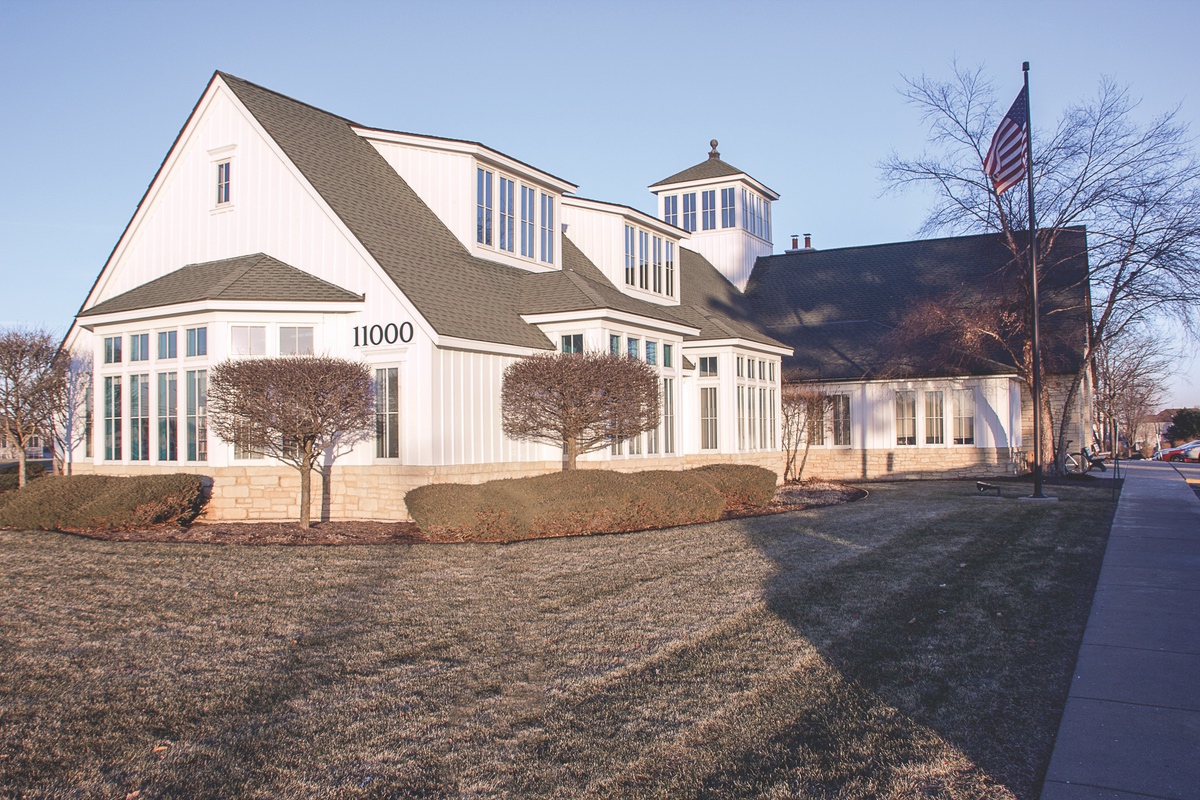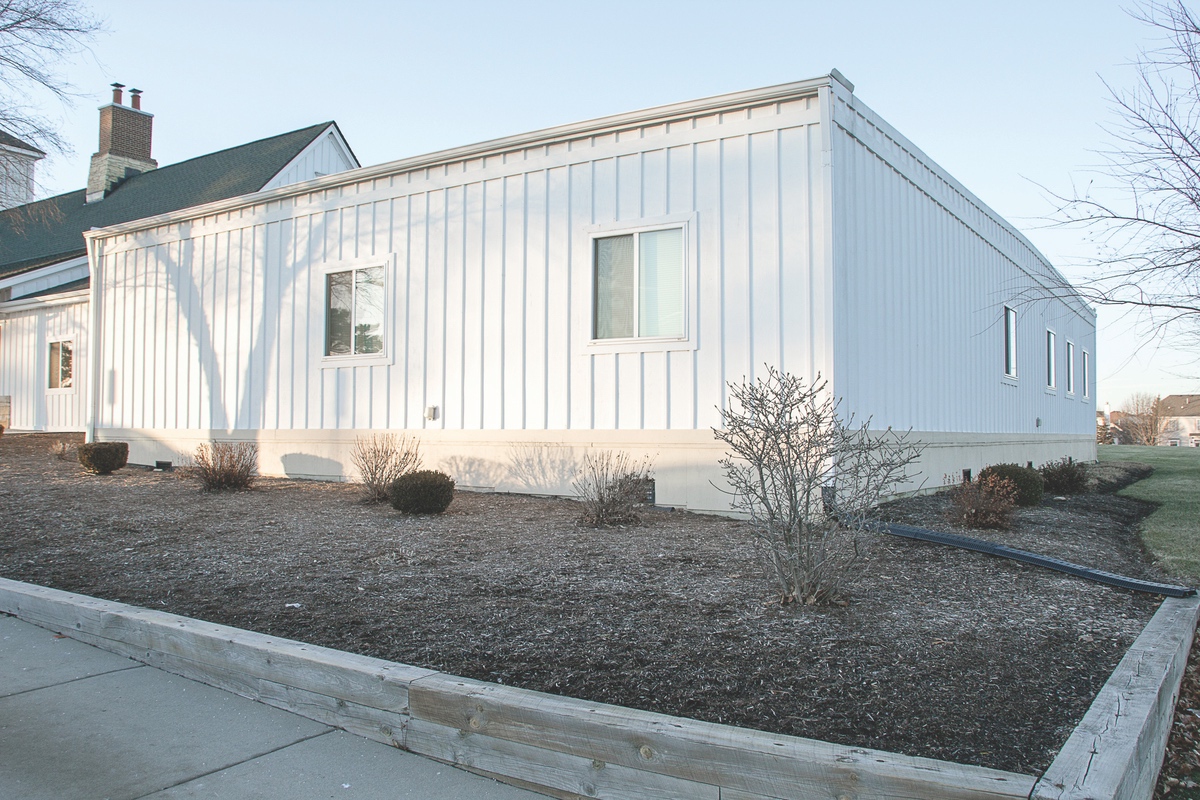This is the first in a series of stories on the Huntley Area Library District’s proposal for a $12.9 million addition to its building at Main Street and Ruth Road in Huntley.
The district tentatively plans to place a proposal to voters on the ballot in the April 2 election to fund the expansion.
The District is 29 years old. It is not part of the Village of Huntley; it operates as a separate taxing body. The current building was opened in 1999, when the District’s population was about 3,900. The district now serves about 40,000 residents in Huntley and parts of Lake in the Hills, Algonquin, Hampshire, and surrounding rural areas in both McHenry and Kane counties.

The Huntley Area Library District is proposing to add 16,500 square feet to the east and northeast sides of its Huntley building if an April referendum is approved by voters. (Photos by Tony Pratt/Sun Day)
Following are the reasons why the District is proposing this expansion project now, in its own words.
The District is currently operating well beyond its design capacity due to a rapid increase in its service population.
Lage subdivisions like Sun City and Talamore did not exist when the library was built.
Three used trailers, installed in 2010, do not come close to addressing the library’s space needs. The trailers are also reaching the end of their useful lives, and will have to be removed soon.
If additional permanent space is not created, the children’s area and programming space will need to be moved back into the already overcrowded main part of the library.
The current library is very busy. More than 227,000 people stepped through the doors of the building in 2017, patrons checked out more than 678,000 items, and participated in more than 1,000 programs and events.

The trailers housing the programming and childrens areas are near to reaching the end of their useful lives and will have to be removed soon.
There is currently no room to expand the collection, meet existing and future programming needs, and address other basic library needs like offering quiet study/reading spaces.
Children and adults are often turned away from programs at the library because the activities are at capacity. The current children’s area in the trailer spaces has an occupancy limit of 12.
Engineers have determined that the current library structure will not support a second floor.
With the aging, temporary trailers being removed, the need for more space will become even greater. The longer the wait, library officials say, the more it will cost to address the library’s highest priority facility needs.
At $12.9 million, the project would cost taxpayers an estimated $2.04 per month per $100,000 of a home’s market value, or about $24.80 per year. The estimated annual tax impact on a $231,000 home (the median home value in the District) would be $57.32. The bond would be payable for 20 years at this fixed amount. On average, the library says about 2.7% of a district homeowner’s tax bill currently goes to the library district.




